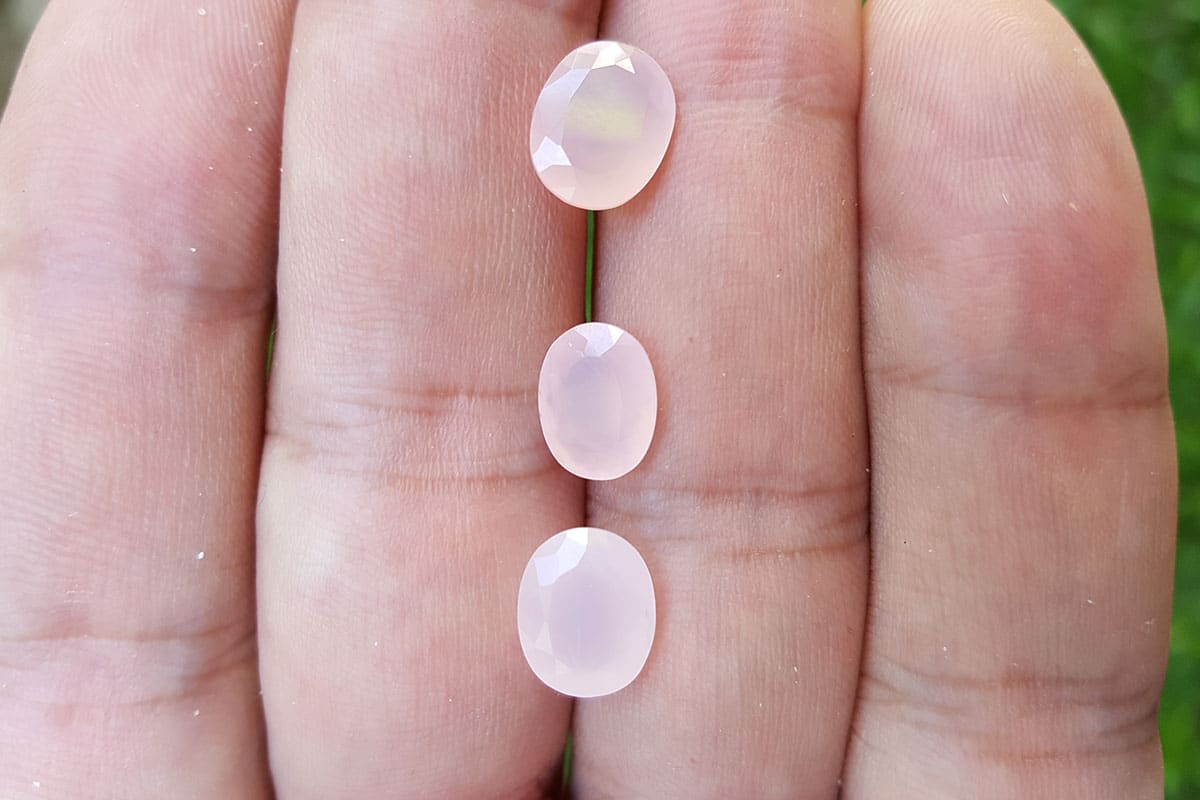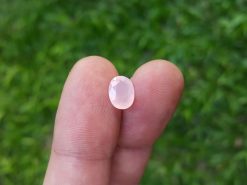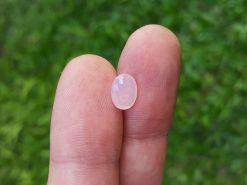Smithsonite

Pink smithsonite crystal stone is a variably colored trigonal mineral
Buy natural smithsonite in our shop
Smithsonite mineral
Pink mithsonite, or zinc spar, is zinc carbonate (ZnCO3), a mineral ore of zinc. Historically, It was identified with hemimorphite before it was realised that they were two distinct minerals. The two minerals are very similar in appearance and the term calamine has been used for both, leading to some confusion.
The distinct mineral was named in 1832 by François Sulpice Beudant in honor of English chemist and mineralogist James Smithson (c.1765–1829), whose bequest established the Smithsonian Institution and who first identified the mineral in 1802.
Smithsonite stone is a variably colored trigonal mineral which only rarely is found in well formed crystals. The typical habit is as earthy botryoidal masses. It has a Mohs hardness of 4.5 and a specific gravity of 4.4 to 4.5.
It occurs as a secondary mineral in the weathering or oxidation zone of zinc-bearing ore deposits. It sometimes occurs as replacement bodies in carbonate rocks and as such may constitute zinc ore. It commonly occurs in association with hemimorphite, willemite, hydrozincite, cerussite, malachite, azurite, aurichalcite and anglesite.
Smithsonite forms two limited solid solution series, with substitution of manganese leading to rhodochrosite, and with iron, leading to siderite.
Sources
The gems is a secondary mineral of the oxidized zones of zinc ores. It is relatively rare as a mineral and even rarer as a cabochon or faceted gem.
The best deposits of Smithsonites are in Mexico (green, blue, pink), in the state of New Mexico in the USA (blue, green), in Sardinia (yellow), in Greece (blue, green) Namibia (green, pink, colorless, beige, yellow), Morocco (green, yellow) and Australia (colorless, green).
Green smitsonite
It is usually translucent, rarely transparent. The mineral occurs in thin crust, nipples, hemispheres or prismatic single crystals. The aggregate may have a fibroradic structure sometimes visible to the naked eye, except under the microscope or microscope.
The pastel colors of the Smithsonite are very attractive. Blue and green are caused by impurities of copper, pink by cobalt and bright yellow by cadmium.
Pink smithsonite
The rather fragile and is therefore aimed at collectors rather than jewelers, although splendid green, yellow, pink and blue specimens have already been seen mounted in earrings and pendant.
A special feature of this stone is its high density (4,35-4,48), well above the average of other better known gems such as Quartz (2,50-2,90) or Beryl (2,65 -2.92).
FAQ
What is smithsonite crystal used for?
The crystal’s energy can help heal and balance the reproductive organs and endocrine system. It is useful in regulating your weight and increasing physical energy. This stone builds up your immune system and activates the thymus gland.
It will heal and clear sinuses, digestive disorders. It will ease osteoporosis and alcoholism. It restores veins and muscles. Midwives should use this stone as it eases the childbirth process. It is good for someone convalescing from a long illness and eases pain. This stone reduces the cravings for drugs or alcohol.
What mineral group is Smithsonite in?
Belongs to the calcite mineral group. It also forms a series as the zinc dominant end member with iron dominant siderite. For many years, collectors have prized blue-green smithsonites from New Mexico and yellowish stones from Tsumeb, Namibia.
Is smithsonite a rare mineral?
The stone is a zinc carbonate mineral with gemstone quality and is sometimes referred to as zinc spar. They are rare and lesser-known gemstones that are sought mostly by gem collectors.
What chakra is smithsonite?
Purple gem resonates strongly within the third eye and the crown chakra.
Natural smithsonite for sale in our gem shop
We make custom made smithsonite jewelry as engagement rings, necklaces, stud earrings, bracelets, pendants… Please contact us for a quote.




